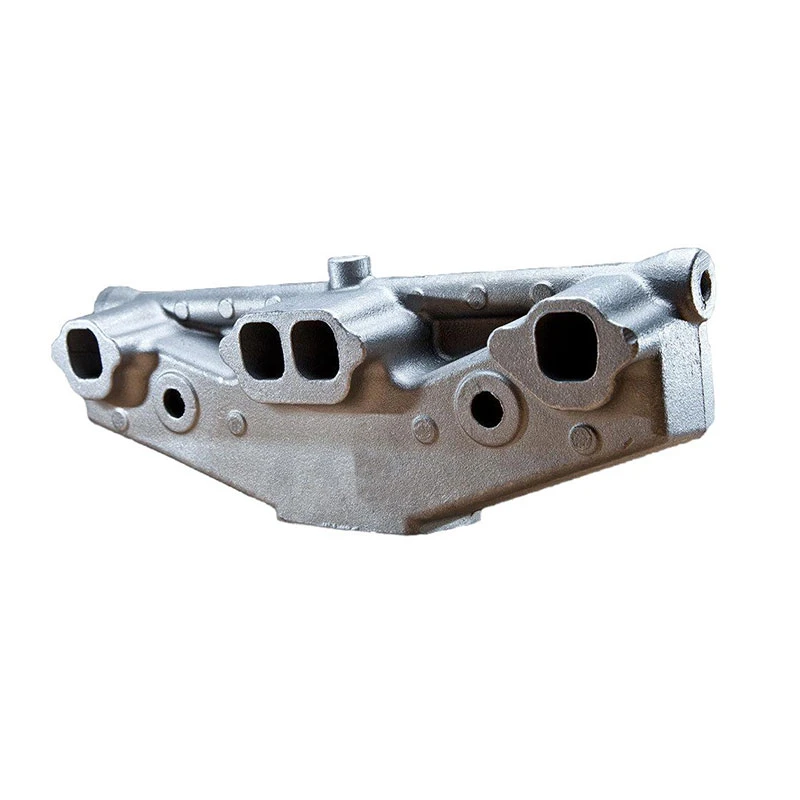zinc sand casting
The Art of Zinc Sand Casting A Comprehensive Overview
Zinc sand casting is a prominent manufacturing process widely used in industrial applications, characterized by its cost-effectiveness and ability to produce high-quality components with complex geometries. The process utilizes zinc as the primary metal, known for its excellent casting properties, including fluidity and corrosion resistance. This article explores the intricacies of zinc sand casting, its advantages, applications, and considerations for manufacturers.
The Zinc Sand Casting Process
The zinc sand casting process involves several key stages, beginning with preparing a mold from a mixture of sand and a bonding agent. Sand casting molds are generally made from silica sand due to its high melting point and relative abundance. The mold is created by packing the sand around a pattern of the component to be produced. Once the pattern is removed, a cavity is left within the sand mold.
Next, molten zinc is poured into the cavity of the mold, where it cools and solidifies. The solidification process is crucial, as it affects the microstructure of the cast component. This step also allows for the filling of intricate details, which is one of the major advantages of zinc sand casting. After cooling, the mold is broken away to reveal the final metal casting, which may require additional finishing processes to meet specific tolerances and surface quality.
Advantages of Zinc Sand Casting
One of the primary benefits of zinc sand casting is its cost-effectiveness. Zinc is relatively inexpensive compared to other metals, making it an attractive option for mass production. The sand casting process is also highly versatile, capable of producing parts in various sizes, shapes, and weights. This adaptability makes it suitable for different industries, from automotive to aerospace.
Another significant advantage is the high fluidity of molten zinc, allowing it to easily fill intricate molds and produce detailed components. This characteristic results in the production of parts with minimal defects, reducing the need for extensive machining or post-processing. Additionally, zinc exhibits excellent corrosion resistance, which enhances the longevity of the cast components, especially in harsh environments.
zinc sand casting

Applications of Zinc Sand Casting
Zinc sand casting finds applications in a wide range of industries. In the automotive sector, zinc castings are commonly used for producing components such as die-cast wheels, housing for various mechanisms, and intricate engine parts. The lightweight nature of zinc alloys contributes to overall vehicle efficiency, making it a preferred choice for manufacturers aiming to reduce weight without compromising durability.
In the electronics industry, zinc sand casting is employed to create housings for devices, connectors, and terminal blocks. The electrical conductivity of zinc combined with its resistance to corrosion makes it an ideal material for these applications. Additionally, the aesthetic finish achievable through zinc casting allows for both functional and visually appealing products.
Considerations for Manufacturers
While zinc sand casting offers numerous advantages, manufacturers must consider several factors when utilizing this process. The selection of the appropriate sand mixture and bonding agent is crucial, as it affects the mold's strength and thermal conductivity. Additionally, the cooling rate of the molten zinc can influence the final properties of the casting, making careful temperature control essential.
Moreover, while sand casting can achieve complex shapes, certain design considerations should be made to optimize the efficiency of the process, including draft angles and wall thicknesses. Engaging in thorough design reviews and simulations can help identify potential challenges early, thereby minimizing waste and production time.
Conclusion
Zinc sand casting is a versatile and cost-effective manufacturing process that offers a wealth of benefits across various industries. With its ability to create intricate and durable components, it stands as a preferred choice for many applications, from automotive parts to electronic enclosures. By understanding the intricacies of the zinc sand casting process and implementing best practices, manufacturers can harness its potential to produce high-quality components that meet the demands of modern engineering. As technologies continue to advance, zinc sand casting remains a vital technique within the realm of metalworking, promising innovation and excellence in future endeavors.
-
Precision Sheet Metal Stamping Manufacturer | Fast & ReliableNewsAug.01,2025
-
OEM Sand Cast Pump Valve Fittings - Baoding Hairun Machinery And Equipment Trading Co., Ltd.NewsAug.01,2025
-
Custom OEM Impellers | High Efficiency & PrecisionNewsAug.01,2025
-
OEM Sand Cast Pump Valve Fittings - Baoding Hairun Machinery | Customization, Quality AssuranceNewsAug.01,2025
-
OEM Sand Cast Pump Valve Fittings - Baoding Hairun Machinery And Equipment Trading Co., Ltd.NewsAug.01,2025
-
OEM Sand Cast Pump Valve Fittings - Baoding Hairun Machinery And Equipment Trading Co., Ltd.NewsJul.31,2025















